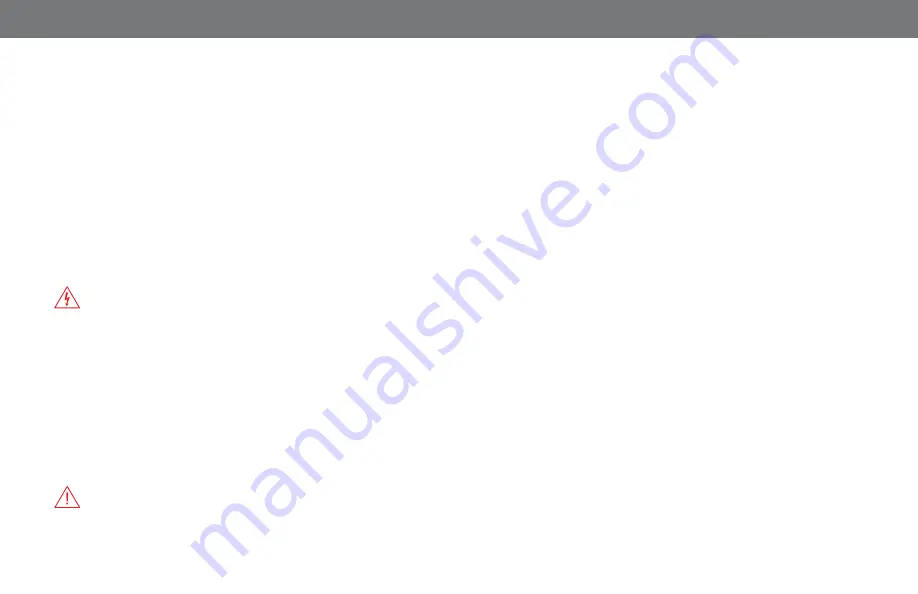
4
INTRODUCTION
Operational Environment
Temperature:
0° to 40° C
Humidity:
Maximum RH 80% for temperatures up to 30° C decreasing
linearly to RH 55% at 40° C, no dew condensation allowed.
Altitudes:
up to 3,000 m (at < 25° C)
Power and Ground Connections
The instrument operates from a single-phase, 100-240 Vrms (± 10%)
AC power source at 50/60 Hz (± 5%), or a 100-120 Vrms (± 10%) AC
power source at 400 Hz (± 5%). The instrument automatically adapts to
the line voltage. Manual voltage selection is not required.
The AC inlet ground is connected directly to the frame of the instrument.
For adequate protection against electric shock, connect to a mating outlet
with a safety ground contact.
WARNING.
Interrupting the protective conductor inside or outside
the oscilloscope, or disconnecting the safety ground terminal,
creates a hazardous situation. Intentional interruption is prohibited.
Maximum power consumption with all accessories installed (e.g., probes,
USB peripherals) is 50 W (85 VA). Power consumption in standby mode
is 2 W.
Cleaning
Clean only the exterior of the oscilloscope using a damp, soft cloth. Do
not use harsh chemicals or abrasive elements. Under no circumstances
submerge the instrument or allow moisture to penetrate it. Avoid electric
shock by unplugging the power cord from the AC outlet before cleaning.
CAUTION.
Do not attempt to clean internal parts.
Calibration
The oscilloscope has automatic and self calibration routines. When Auto
calibration is enabled, a recalibration will automatically occur whenever
there is a 5° C temperature change since the last power-on or auto
calibration. Self calibration enables you to perform a calibration on
demand. The Self calibration requires about one minute to complete.
We recommend returning the oscilloscope for factory calibration once per
year. See the instructions on p. 30 for returning a product for service.
Support
Online Documentation
Online Help for using the oscilloscope is available by pressing the Help
button on the front panel.
Teledyne LeCroy publishes a free Technical Library on its website.
Manuals, tutorials, application notes, white papers, and videos are
available to help you get the most out of your Teledyne LeCroy products.
The
WaveJet Touch Oscilloscopes Operator’s Manual
can be downloaded
from
teledynelecroy.com/support/techlib/productmanuals
.
This .PDF document contains more extensive procedures for operating
your oscilloscope than are found here.
The Datasheet published on the product page contains the detailed
product specifications.
Technical Support
Registered users can contact their local Teledyne LeCroy service center
at the number listed in this guide to make Technical Support requests by
phone or email. You can also submit Technical Support requests via the
website at
teledynelecroy.com/support/techhelp
.
Summary of Contents for WaveJet Touch
Page 1: ...WaveJet Touch Getting Started Guide...
Page 2: ......
Page 5: ...WaveJet Touch Oscilloscopes INTRODUCTION...
Page 9: ...WaveJet Touch Oscilloscopes SET UP...
Page 15: ...WaveJet Touch Oscilloscopes USER INTERFACE...
Page 21: ...WaveJet Touch Oscilloscopes BASICS...
Page 33: ...WaveJet Touch Oscilloscopes REFERENCE...
Page 38: ...REFERENCE 34...
Page 39: ......
Page 40: ...2018 Teledyne LeCroy Inc All rights reserved 926062 00 Rev A January 2018...









































